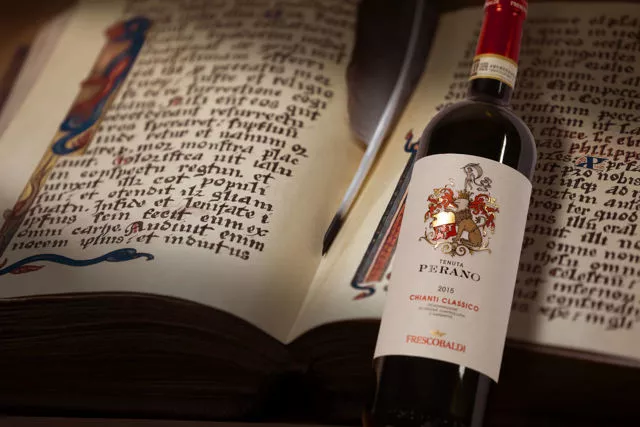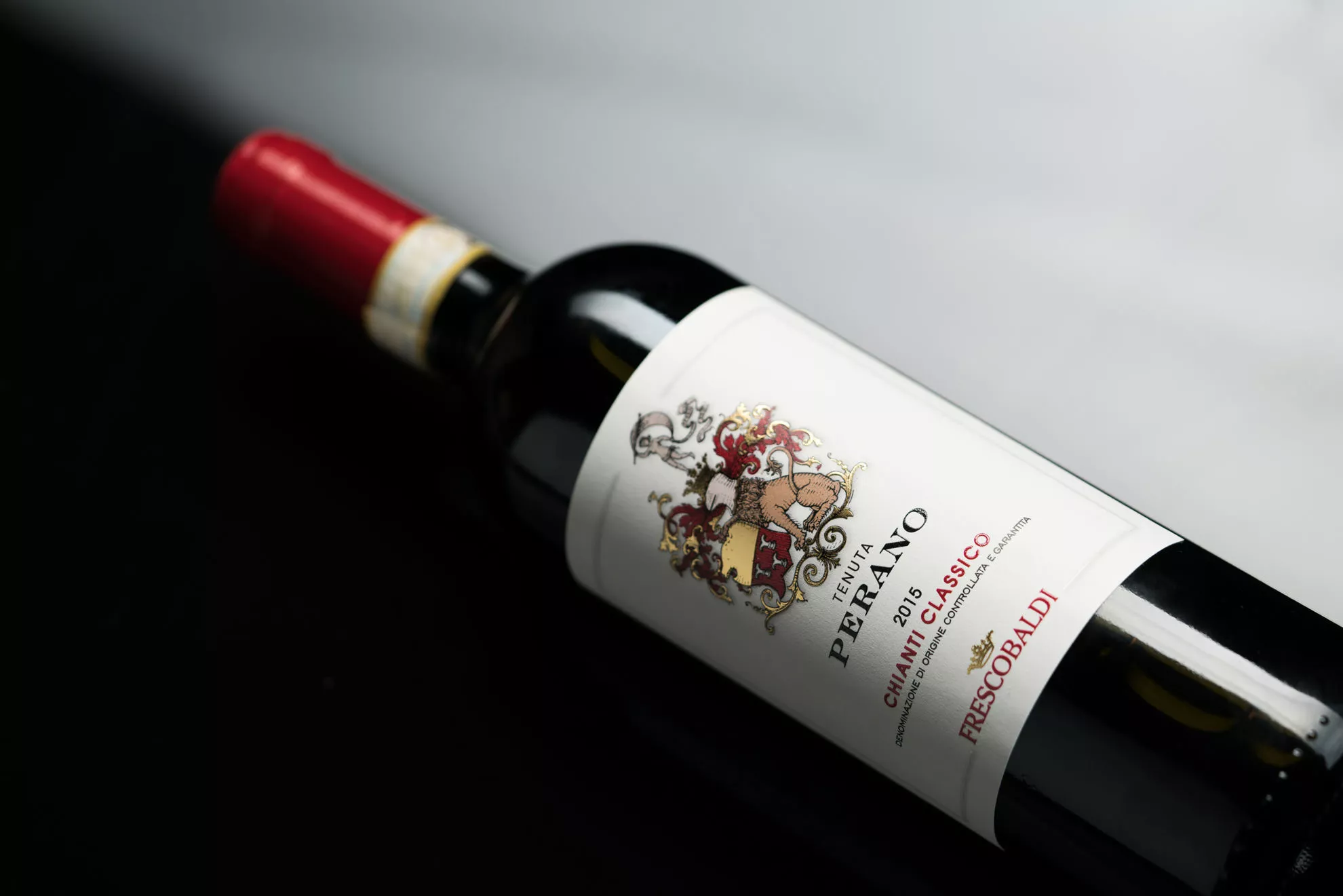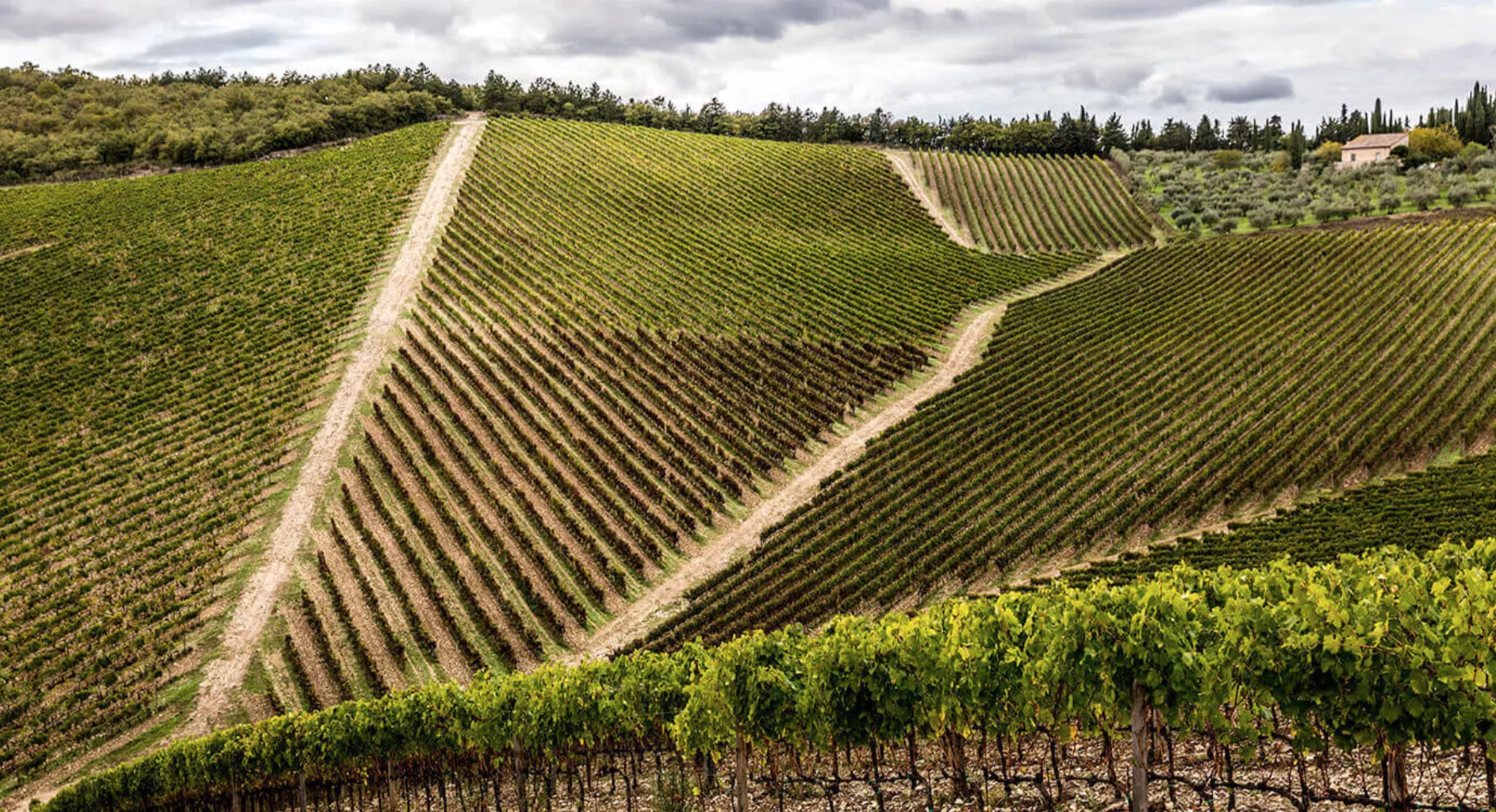
Chianti: wine, region, passion
A landscape of gentle hills embroidered with vineyards, where, now and then, a farmhouse appears in the shade of cypress trees.
The Chianti area, in the heart of Tuscany, is one of those places that can be imagined, but cannot be fully understood without seeing and tasting them.
Time seems to have stopped in a landscape with villages that follow one after the other. The ancient and marvellously preserved places alternate with the inspiring natural landscape that offers the unique food products that make this land, so fertile and rich in culinary traditions, famous the world over.
The birth of a wine destined to become a legend
When one thinks of “Chianti”, the enchanting territory immediately comes to mind, but also a noble wine, produced according to rigorous discipline and ancient knowledge.
The production of wine in the Chianti region has an ancient history, starting in the Etruscan period. The first documents defining the name Chianti and dating from the 13th century, designate it not only as an area, but also as a wine produced, referring to the i created in Florence to administer relationships with some producers of a red wine based on Sangiovese. (source: WineNews)
The Chianti Classico region was the first wine production area in the world to be defined by law, with an edict of 1716 by the Grand Duke of Tuscany Cosimo III. This record even today gives prestige and uniqueness to a region and a world-famous wine. It is no coincidence that throughout the world, Tuscany is also often referred to as Chiantishire. (source: WineNews)
Confusion and denominations of Chianti
In 1967, Chianti obtained the Denominazione di Origine Controllata (DOC) (Controlled designation of origin - DOC) and, in 1984, the Denominazione di Origine Controllata e Garantita (DOCG)(Controlled and guaranteed designation of origin - DOCG) was introduced with specific cultivation . (source: Policy Document)
In the years following the law of 1716, confusion grew regarding the local red wines and wine designated as Chianti and unleashing real commercial battles. Thus, in 1924, a group of producers met in Radda in Chianti and founded the Consortium for the defence of Chianti wine, to protect the product and promote the development of the Chianti Classico territory, according to the boundaries defined in 1716. (source: Consorzio Vino Chianti Classico). The Black Rooster on a gold field was chosen as a symbol of the new Consortium officially founded in 1927.
Later, another big difference between the same wines called "Chianti" was recognised. Years of legal disputes followed to maintain the uniqueness and distinction of "Chianti Classico" compared to "Chianti" alone and other wines produced in Tuscany.
In 1932, 7 distinct sub-zones of wine production were identified in the Chianti area, designating “Classico” the noblest Chianti and subject to stricter regulation.
In 1987, the Consorzio del Vino Chianti Classico was founded as completely separate from the Consorzio del Chianti. The Black Rooster symbol was then sold to this new consortium for the noblest wine.
The types of Chianti wine are made up of the same varietals: Sangiovese, Canaiolo, Trebbiano, white Malvasia, Sauvignon and Merlot. (source: Policy Document)
The percentage of grapes, however, can change from one wine to another. The undisputed protagonist variety, however, has always been Sangiovese, which can be 100% or in variable quantities, with a 75% minimum content. (source: Policy Document)


The Black Rooster of Chianti
The famous Black Rooster, symbol of Chianti, has its roots in a unique legend.
It is said that at the time of the rivalries between Florence and Siena, the two republics, unable to find an agreement about their borders, decided to challenge each other: at the crowing of the rooster a knight set out at a gallop from Siena and another from Florence, each for the other city. The point of their meeting would mark the new boundary.
The Florentines were able to win by using a cunning ploy: they kept their black cockerel fasting so that it sang before dawn, allowing the Florentine knight to travel much further than the challenger from Siena.
The two knights met at the castle of Fonterutoli, where the treaties were signed and the border between the two republics was set at Castellina, a few kilometres from Siena.
The black rooster thus became the symbol of the Chianti Classico consortium and is still printed on all bottles today, bearing witness to the authenticity of Chianti Classico wine. (source: Consorzio Vino Chianti Classico)
Chianti and Frescobaldi: solid, long-lasting love
Chianti is not just a wine and not just a territory: it is our history, our knowledge and our home. Through the centuries it is a place that has given great satisfaction, becoming more than iconic.
Through different territories and estates, the Frescobaldi family has always been conscious of the diversity of Chianti wine, with its sensory notes that change depending on the production area and climatic conditions.
Nipozzano Castle, an ancient and famous, historic stronghold of the family, is located in the heart of the prestigious Chianti Rufina area, right on the hillside overlooking the Arno river valley. Chianti Rufina is produced here in the smallest of the Chianti sub-zones.
Tenuta Perano, in the municipality of Gaiole, near Siena, is located instead in one of the areas most suitable for Chianti Classico. Here, different types of Chianti Classico are produced, with timeless knowledge and following strict production rules. This magical place, with its steeply sloping vineyards, perfect exposure and optimal soil, lends itself to elegant wines with intense fruity aromas.
The Castiglioni estate, located in the gentle hills of the Val di Pesa, instead gives life to a soft Chianti DOCG, pleasantly fruity and with strong character, characteristics captured from the varied territory, mild climate and breeze from the Tyrrhenian Sea.
The Castiglioni winery, which has been owned by the family since the 11th century, is the centre where the Frescobaldi family began producing wine in 1300 and it has been a success story ever since.
info@frescobaldi.it |+39 055/27141